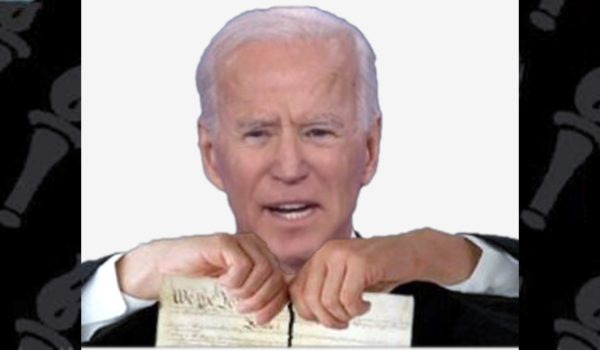
The Biden administration wants to waste billions more on California’s train-to-nowhere, which will harm the environment. The Daily Wire reports:
President Joe Biden’s administration announced last week that it had restored a $929 million grant for a high-speed rail project in California that has been marred by environmental lawsuits, delays, and cost overruns. The money restored by the Biden administration was canceled by his predecessor, President Donald Trump, who pointed out that the project was a “disaster” due to the delays and ballooning costs. In an editorial, the Las Vegas Review-Journal compared the high-speed rail project to Boston’s Big Dig, a notoriously expensive boondoggle that took 25 years to complete at a cost of $22 billion, when it was originally proposed to taxpayers as taking 15 years to complete and costing just $2.8 billion in 1982.
California, the editorial board wrote, appears to be attempting to out-do Boston’s boondoggle.
“In the early aughts, the state’s political class bamboozled voters into approving a high-speed rail project intended to ultimately connect Los Angeles with San Francisco. Construction was supposed to be completed early this decade, and residents were assured that the shiny new ‘clean energy’ train could be theirs for the low, low price of $30 billion,” the editorial board wrote. “Instead, the project is more than a decade behind schedule and is now projected to cost $100 billion … and counting. Officials now hope they can complete a 171-mile stretch between Bakersfield and Merced by the end of the decade.”
Almost no one wants to travel the obscure route that is likely to be completed — from Bakersfield to Merced — by rail. The two cities are already connected by a speedy highway, California Route 99. It only takes a little over two hours to drive from one city to the other. Merced has only about 80,000 people, so it is not an important destination. It’s a city with an extremely high poverty rate, and few attractions for either tourists or businesspeople.
This rail project is so expensive that it will cost more to travel by train than by airplane. And even “high-speed” rail is much slower than air travel. As the Review-Journal notes, “high-speed” rail can’t “compete with air travel in terms of time or price.” Reason Magazine says that few people will ever ride California’s “high-speed” rail system — even if it someday connects northern and southern California — because it “will have ticket prices higher than airfares and will take nearly twice as long as flying.”
Will this presidential election be the most important in American history?
The rail project will also harm the environment. The Review Journal calls it an “environmental nightmare.” As the Daily Wire notes, “During the project’s more than 10-year life so far, it has been sued multiple times by environmentalists for harming wildlife along the proposed route.”
Cars and buses consume less energy per passenger-mile than the little-used trains will, and simply building the rail line results in greenhouse gas emissions. Operating high-speed rail will “take massive amounts of electricity,” “raising questions about the power grid’s ability to meet the demand,” says the Fresno Bee. “High-speed trains require huge amounts of infrastructure” compared to a “four-lane freeway,” says a transportation expert.
Bullet trains are usually white elephants. South Korea abolished its celebrated high-speed rail line from its capital, Seoul, to a nearby major city because it couldn’t cover even the operating costs of keeping the trains running (much less its fixed costs). Despite Japan’s much-vaunted bullet trains, most Japanese don’t take the bullet train either; they take buses because the bullet train is too expensive. Bullet trains do interfere with freight lines, so Japanese freight lines carry much less cargo than in the United States, where railroads—rather than trucks—carry most freight, thereby reducing pollution and greenhouse gas emissions.
If California uses existing rail lines for high-speed rail, that will harm the environment, by crowding out more environmentally-friendly freight trains. As businessman Warren Meyer notes at Coyote Blog:
“The US rail system is optimized for freight, vs. European and Japanese systems that are optimized for passengers (it is hard to do both well with the same network). The US situation is actually better, much better, for energy conservation. I wrote in detail about this before:
“‘First, consider the last time you were on a passenger train. Add up the weight of all the folks in your car. Do you think they weighed more or less than the car itself? Unless you were packed into a subway train with Japanese sumo wrestlers, the answer is that the weight of the car dwarfs that of the passengers it is carrying. The average Amtrak passenger car apparently weighs about 65 tons (my guess is a high speed rail car weighs more). The capacity of a coach is 70-80 passengers, which at an average adult weight of 140 pounds yields a maximum passenger weight per car of 5.6 tons. This means that just 8% of the fuel in a passenger train is being used to move people — the rest goes into moving the train itself.
“‘Now consider a freight train. The typical car weight 25-30 tons empty and can carry between 70 and 120 tons of cargo. This means that 70-80% of the fuel in a freight train is being used to move the cargo.’”
Trains are just not convenient for most people. Mass transit carries fewer than 3 percent of all commuters to work, even in the nation’s 50 largest urban areas, a percentage that continues to fall despite rising spending on mass transit.
Yet, Biden’s infrastructure plan contains billions of dollars to enable Amtrak to reach tiny towns where few people will ever use the train, resulting in many more trains-to-nowhere.




